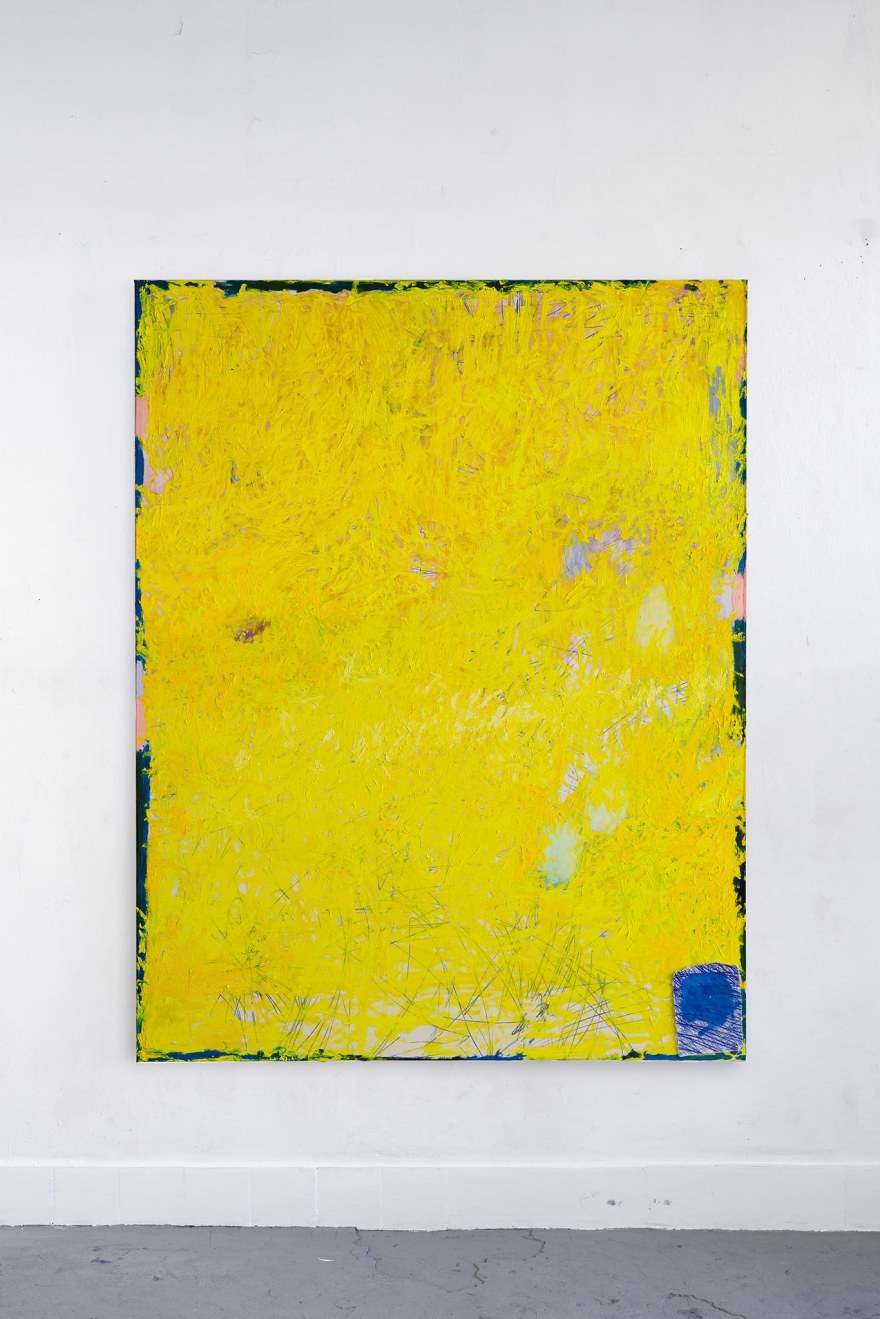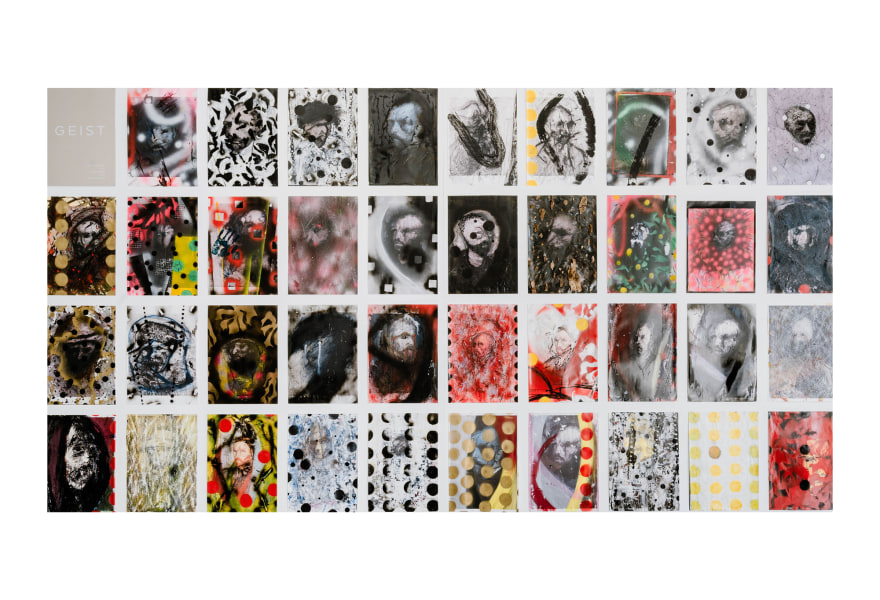05 june 2023, Yves Joris
Artists in the footsteps of Vincent Van Gogh
I am not going to discuss Van Gogh's life and work here. Those who are interested can turn to the thousands of books that have been written about the man since his death: about his life, his madness, his use of colour, his letters to his brother… an endless stream of words that never runs dry. Why, 133 years after his death, is the painter still a source of inspiration for dozens of artists? With that question in mind, I visited the Geist exhibition, which can be seen at NQ Gallery until 2 July.
The 2nd of June will most likely be remembered as a warm day with outdoor cafés packed with the thirsty who, like sunflowers, turn to face the warm glow of the sun. At the Van Gogh Museum, this day marked the 50th anniversary of Dutch Queen Juliana being presented with a sunflower during the official opening of the museum, which has since become one of the most popular crowd pullers in Amsterdam.
Inspiration for Gustav Klimt, David Hockney and Arnulf Rainer
The man who received little recognition during his lifetime and who more than once pleaded with his brother for financial support would perhaps fail to understand the golden aura that now envelops his work. The bright colours, the ferocious brushstrokes, the ever-present movement … there are plenty of reasons to find inspiration in Van Gogh's work.
The Geist exhibition is also based on inspiration in which Van Gogh plays an important role, along with Arnulf Rainer. Austrian painter Arnulf Rainer was influenced by various movements, including Surrealism, Tachism and Art Brut, but became best known to the general public for his 'Übermalungen' ('Overpaintings') portraits of himself, as well as of Egon Schiele, Rembrandt and last but not least, Vincent Van Gogh.
Creation in the spirit of
It was during a stay in France that Ronald Zuurmond challenged himself – in the spirit of Rainer–- to edit prints from an old catalogue about Vincent Van Gogh. It became a fascinating process of painting over, but also removing, sometimes subtly and at times with an almost irrepressible expressionist fury. The result is a visual phantasmagoria with which the artist takes you not only into the work, but also into Van Gogh’s mind. This suddenly makes the exhibition title Geist very clear to me, because in the language of Goethe and Hölderlin, this term not only represents the shape or appearance (of the artist) itself, but also intellect and ingenuity. The 39 works – placed next to and below each other – attract attention. Your gaze fixes on the different variations in material, texture and colour.

Alexander Tinei, Reaper, 2023, NQ Gallery
From bright colour to subdued silence and back
The difference with the work of Hungarian painter Alexander Tinei could not be greater. Zuurmond’s exuberant colours make way for a limited colour palette in which white, black and red play a role. The person on the canvas could easily be a contemporary version of Vincent, wrestling with his own demons. Does it not seem as if he is looking at us as if ashamed of his situation or sunk deep in thought, preparing for a new job?

Marc Mulders, The garden at Saint-Remy 15.04.23, 2023, NQ Gallery
Van Gogh's state of mind also plays a role in the four works by Marc Mulders. After all, on 8 May 1889, Vincent checked himself into the Saint-Paul-de-Mausole asylum in Saint-Rémy, not far from Arles. He was not allowed to leave the site for the first month, but within the walls he found a lush garden with pine trees, which proves to be a great source of inspiration for new studies and motifs. For The Garden of the Institution in Saint-Rémy, Van Gogh chooses a special point of view, right next to the wall of the hospital. The diagonal path with the stone bench gives the work a special spatial effect. He paints the exuberant flowering shrubs and trees in a jumble of impasto strokes of paint. Despite the enormous variety of shapes and colours, the composition has depth and structure. But it is mainly colour that is important to Van Gogh, who wrote to his sister Wil from Arles a year earlier: “We need cheerfulness and happiness, hope and love. The uglier, older, worse, sicker, poorer I become, the more I want to avenge myself with powerful, well-arranged brilliant colours.” With Mulders, the figurative story fades into the background and the colours remain, bright colours that attract and repel in a ferocious expressionistic dance.

Stacii Samidin, Societies x van Gogh, 2023, NQ Gallery
The odd one out
I linger a bit longer at the work of photographer-documentarist Stacii Samidin – perhaps because I realise that I am standing in front of images of a house to which I have no key. The work Societies x van Gogh won't let me in. The artist himself describes it as a large self-portrait in which he could freely associate his thoughts. The result shows dozens of people who are not always representative of the society in which we live, again making the link to Van Gogh suddenly much clearer to me. In her work If we all would be plant, Marieke Bolhuis once again shows that overwhelming splendour of colours in combination with the heaviness of the paint structure. Yet the sculptures also have a certain light-hearted humour. If you take the time to examine them closely, you will notice that the flowers have … small feet. Every distance is bridged with small steps.
Flowers in a vase have no direction
I borrowed these words from a poem belonging to the work of Sara Van Vliet, who mainly studied the shape and speechlessness of flowers. The exhibition features two works with such overblown titles as The Behavior of Intentionality and The Fairytale Between Democracy, the latter of which reminds me of a combination of Rothko's colour fields with Morandi's still lifes, subdued and with a cerebral beauty.

Lotte Wieringa, The word for flower is sun, 2023, NQ Gallery
Whereas Mulders lets the colours whirl around in a wild dervish dance, Lotte Wieringa has them cover the entire canvas. In her work, the colours become living organisms that continue to advance. The yellow of the sunflowers now covers the entire canvas. A few small smudges and surfaces remind us that the sunflower yellow has not yet become overgrown. A sense of peace returns, one that is always present in the work of Nick Ervinck. He sought and found inspiration mainly in Van Gogh's colour palette, where Petoemba flaunts a white-yellow sparkle and Minotersiemo translates the swirling clouds from Starry Night into the third dimension of a sculpture.
The Geist exhibition proves once again that Van Gogh's spirit has yet to be tamed and that artists from the past and present, though probably also the future, will long find inspiration in the work of this influencer before the word existed.

Nick Ervinck, Petoemba, 2023, NQ Gallery
